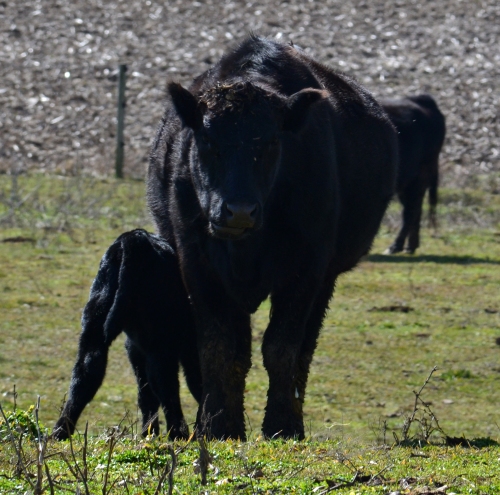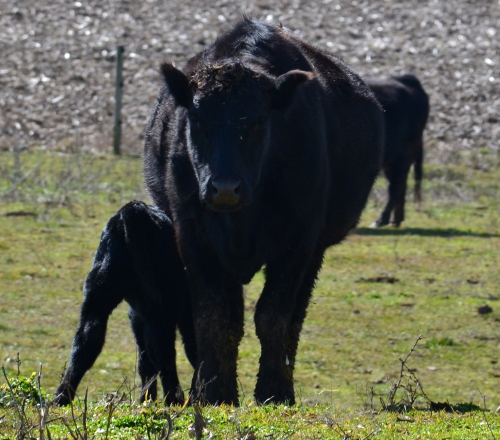You may have used (or heard) the word “ruminate,” meaning to think about something. “I’m going to ruminate on that a little more before I make my decision.” Or the phrase “chew it over,” also talking about taking some more time to think about something.
Did you know those terms come from cows? (And other ruminants, like sheep and goats, too.)
We know that cows eat lots of grass, and we learned in the last post that they have good bacteria, protozoa, and fungi in their rumen (part of their stomach) to help them digest the grass they eat. But the rumen microbes need more help from the cow than just a quick chew and swallow.
The cows will take a bite, chew, and swallow their food. Then the rumen microbes get to work on the new food. They do what they can, but the long stems of grass and hay are just too hard for them to break down. The grass needs another cycle of chewing by the cow to break down the tough outer walls of the plants so the microbes can get to the good stuff inside.
So the cow ruminates. It’s a little gross, but also pretty neat. Bear with me.
Cows can do a sort of… “controlled vomit”… for lack of a better phrase. The rumen and esophagus also work backwards, and can send a small amount of food (a bolus) back up the esophagus and into the cows’ mouth. Then she chews on it for a while (“chewing her cud”), and swallows it again. A combination of the chewing action and the enzymes in the cow’s saliva helps to break the plant fibers down, so the bacteria can get to the fiber and carbohydrates inside the plants, which is what they are really after.
The cow in the photos below is ruminating while her calf nurses. As you look at the three photos, look at the position of her mouth as she chews her cud. The lower jaw does all the work, and she always chews in a side-to-side motion. (You can also see the calf wagging his tail as he nurses. Happy baby!)




Can I just say this is unbelievably cool? I SO look forward to these each day!!!! 🙂
Me too!
ick! when do we get back to food?
I’m glad you’re enjoying the posts. 🙂
I’m glad you’re enjoying them, too. 🙂
Andrea, it’s all about food, some parts are just a little more glamorous than others.